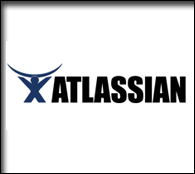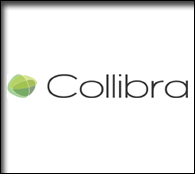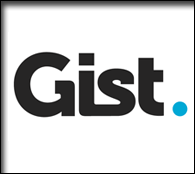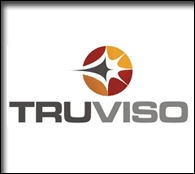industry stuff
Not predictions, or pontifications, but…
by Eric Norlin on Nov.15, 2008, under general, industry stuff
This morning I’m thinking about how weird and wonderful and topsy turvy the next 3-5 years are going to be. I’m thinking about “what if” scenarios. Not predictions. Not pontifications. Not even well-reasoned thought. Just “what if” scenarios…
What if…the Foundry Group, Jeff Clavier, YCombinator, Union Square, TechStars “method” of being a VC became the prominent one, and the big boys (Sequoia, Kleiner Perkins) found themselves with a broken model?
What if…a bunch of tech-saavy VC/entrepreneurial types actually set up a marketplace for the equity of private companies and re-ignited the ability to “exit” (at some level) for startups.?(Kedrosky - if you do this, I wanna work on it.)
What if…the automakers (per Fred Wilson’s suggestion) ended up busted up, not bailed out, and owned largely by private equity firms?
What if…the “enterprise 2.0″ space stumbles upon an innovation in productivity so HUGE that it’s akin to the productivity gains we first saw when email became corporate common-place?
What if…Google lost it’s dominance and Facebook became a failed experiment?
What if…TechCrunch turned out to be a “web 2.0 phenomenon” and shuttered it’s doors?
What if…we stopped seeing incremental gains in tech innovation and saw a true “gap jump?”
What if…oil rose with the recovery, but didn’t go above $80?
What if…Tesla went under, but the Volt was a huge success?
What if…Boulder, Pittsburgh, the Twin Cities, Austin, New York and the Research Triangle replaced Silicon Valley as “the epicenter” of innovation?
What if…Novell and Sun went private (can we please get this done? please?)?
What if…eBay went under, but not before spinning out PayPal in an acqusition to a regional bank?
What if…the only “bank” left standing at the end of this is Wells Fargo and a bunch of decent balance sheet regionals?
What if…hedge fund managers start getting paid on the same time frames as their investors?
What if…all of this “end of the American Empire” talk is silly, and the country emerges from this a nation of fiscally responsible, energized entrepreneurs (and rugged individualists)?
What if…all of this is part of a larger “networking of everything” phenomenon that’s occurring. And the result is a more distributed, intelligence at the edges — everything (national infrastructure, finance, state initiatives, etc)?
What if…Cisco buys Salesforce.com and the Amazon Web Services part of Amazon?
What if…the “new” James Bond movies continue to be as good as Casino Royale?
What if…the long-term demographic “shift” to the southwest and southeast continues and the majority of America resides there by the year 2025? (okay, that wasn’t 3-5 years.)
Yeah, it’ll probably never happen, right? But on the other hand….
It’s time to get inspired
by Eric Norlin on Oct.09, 2008, under general, industry stuff
I’ve been sick since Sunday. I hate being sick. My wife will tell you (find her at the Defrag registration desk) - I become the world’s biggest baby when I’m sick. I don’t handle it well.
Things are different this morning, though. I’m waking up absolutely INSPIRED. Here’s what I’m reading:
Howard Lindzon: Too SMALL to Fail (quoting) -
 Here is why panic spreads. Otherwise smart people, who on the surface think they are calm, freak everyone out with their own passive aggressive panic. If you don’t believe me, Sequoia and Uber angel investing guru Ron Conway are just now writing letters to all their CEO’s and giving them advice on how to survive . I mean today?
No offense, but get over yourselves.
If you have a good business, these letters are ridiculous in the timing. Maybe force them to read this letter upon funding and make them memorize it, but at this point, it reeks of panic and fear.
I have been telling any of the CEO’s that will listen to me, to THINK about how we turn this panic into an opportunity. We all have weak investments and weak CEO’s, but a blast email on October 7th is absurd. Anyways, I am poor and they are rich, so that’s that. So while the rest of the world panics, you can panic too, or you can take a few steps back and remember how fortunate you are to be reading this blog, because if you are, you are ‘Too Small to Fail.’ So what do I mean by that?
I can’t fire myself. I am nimble and lean and have a plan. I see this panic and I want to think about the afterbirth of it. Panic’s end. If you are smart and a little lucky, you will survive in good stead and historically, great things happen.
Read that last line 7 times in a row.
I’m also reading Brad Feld: Ok Entrepreneurs, Time to Step Up (quoting) -
My recommendation to all of you entrepreneurs out there is to get off the negative sentiment treadmill, step up, and lead. The people working for your company are likely confused, concerned, and overwhelmed with all the noise in the system.  In the near term, building your business will likely be more challenging on a number of dimensions. So what - that’s the normal cycle of business. You don’t need to be a blind optimist and spout happy talk, but you do need to have a clear sense of purpose and goals for your company. Leadership 101.
I emphasized the “so what” for a reason.
I’m also watching Gary Vaynerchuk. Take 15 minutes and tell me you’re not excited and inspired.
So, here’s the thing - we roll with the punches. Defrag’s topic isn’t changing and our sessions are on point, but my new mission is simple: You WILL leave defrag inspired, optimistic and ready to go make something happen in this downturn. We can all figure this out. Now, not all of the startups will survive, but that’s okay. Let’s get together, work this out, figure out how to land customers *together* and then go make it happen.
And if you’re a “customer” - then you MUST be there. This is your chance to shape, mold, twist and mutilate the next round of products to PERFECTLY SUIT YOUR NEEDS. If you’re not there, telling folks what you want - then it is your fault when you don’t get what you need.
Bottom line: let’s use Defrag to set aside all of this gloom and doom. Let’s *not* turn into the “baby” that I become when I’m sick. Let’s get inspired. Work hard. Work together. And, finally, truly bring some innovation to ground. In some ways, we’re now all paying the price for “web 2.0″ - but the coming days are the days that will really matter.
Andy, Howard and Jason on a Sunday morning
by Eric Norlin on Sep.28, 2008, under general, industry stuff
To say this past week has been “tumultuous” would be an understatement. Late Friday afternoon, I found myself having conversations with local bankers about the worst case scenarios, while bartenders stood there saying, “man, maybe I won’t deposit my check - maybe I’ll stick that in my pocket.” Well, we awake this morning to what is apparently a new world, as it seems that the “bailout compromise” is going to get done.
Simultaneously, I’m finding Jason Calacanis’ email send (entitled, “(The) Startup Depression“) in my inbox, and finding Howard’s great blog post that references Andy’s amazing article from last week. Without getting into the whole mess of agreeing or dis-agreeing with the bailout (I’ve done both in the last week - hasn’t everyone?), let me just say that A) I do side with Andy in thinking this might be one of the greatest “trades” the U.S. could ever make, and B) I couldn’t agree more with Howard — it just isn’t profitable to “bet against the U.S.”
All of it has me looking out over a cloudy Gulf, remembering the 2001-2003 timeframe, and thinking about how momentous this event really is. So, you guessed, I’m resorting to the bullet list:
1. Anyone that underestimates how important this bailout will be is a fool. Howard mentions “new trends” - and I agree. This thing will REMAKE the financial landscape as we know it. It’s akin to “the new deal” in terms of societal impact, and is easily as important as Smoot-Hawley or Glass-Steagall.
Jason’s email send has lots of pretty typical “tactical advice for entrepreneurs” in it, but the one thing that really bothered me was his prognostication that “things are gonna get really bad.” It is simply IMPOSSIBLE to know that right now. This bailout could very easily put a floor under mortgages, save the banks, open the credit markets back up, strengthen the dollar (very weirdly - see andy), help the deficit AND make the U.S. “gubmint” a whole bucketload of money to play with. In short, I’m nowhere NEAR willing to think that we should all be “hunkering down” for 2-3 years of startup nuclear winter. It very well could be that after things sort out (and we may get a rate cut in here still, don’t kid yourselves), this market — and the accompanying economy absolutely lights on fire. Could be. Maybe. No one knows.
Am I planning for “happy times?” Of course not. I’m planning as I always do — to be a long distance runner not a sprinter. Survival is key, but mapping out survival for most people should only take about 5 minutes. After that, you have to consider both A) disaster and B) complete upside surprises - the key here is to give at least equal weighting to both, while knowing that in all likelihood, the upside to disaster ratio is probably preternaturally disposed to at least 60/40 (the universe worked that out long ago).
2. Will lots of startups fail? Yep, undoubtedly. But lots of startups will stay alive too. And they’ll slowly spend money. And they’ll come to conferences. And they’ll get focused and tough and lean. Startups always fail - that’s the name of the game, but startups also always find a way to stay alive. Bottom line: people can talk all day about the benefits of being in silicon valley, but one of the huge downfalls of it is that when times are good, EVERYBODY gets funding. This whole market phenomenon will scare and hurt the “valley” startup scene way more than it will Boulder, Pittsburgh, Austin, the Twin Cities, Atlanta, Research Triangle, or good ole Florida.
3. What should you do? Everyone I know that’s been around the block agrees on this one - START A BUSINESS. What am I doing? Launching a new conference (more on that later). Why? Because I remember January 2002. I remember meeting Andre Durand for lunch in downtown Denver and watching his eyes light up talking about “digital identity.” At the time, I was making ends meet in the web design/copy writing business, and it was just refreshing to see anyone excited about technology — after all, at that point, the entire software industry only had like 25 people still working (HA!). In any case, I didn’t get Andre’s idea. It sounded so…..boring. Three days later, I woke up in a cold sweat with my head filled with ideas about digital identity. I couldn’t read about anything in tech land without seeing how identity was the solution. I had become completely myopic.
I called Andre back and told him that I wanted to be involved “no matter what” - it wasn’t about money, and it wasn’t about startup greatness; the world NEEDED this dammit - and we were just the guys to bring it to life (or so we thought). Within days, I’d met Phil Becker (who has since become my absolute #1 business mentor - and a true, close friend) and the whole thing was off and running. Ping Identity (software company) came to life, and Digital ID World (tech conference) came to life.
People thought we were absolutely nuts, by the way, for starting a tech conference. Comdex had just announced bankruptcy. There were barely any tech conferences around, much less new ones launching. And “digital identity” was kind of a joke (remember Microsoft’s Passport? yea). Well, we muscled through - and made just enough money the first year to allow us to do it all again (which is to say none of us made a dime on the conference in year 1). Needless to say, it all worked. Digital ID World grew (and was sold in 2005). Ping got funding (when it was impossible to get funding). It all came together. There were times when Andre would call and tell me that Ping would be outta money in two weeks if he didn’t raise cash, but it did all come together. Bottom line: start a business.
At the end of the day, every thing’s changed, but every thing is also still the same. The markets will sort this out. Good companies will make it. Defrag will be here in 2009 (so you have that to look forward to). The sun will still rise. And, if I was a betting man (oh wait - I am), I’d bet on U.S. innovation to win out in the end - again.
Smile. Think abundance, not scarcity. Get optimistic. To quote U2, “it’s a beautiful day.” ![]()
P.S. Don’t think there isn’t a certain irony/indicator in the fact that the conference that really kicked off this whole last cycle (Web 2.0) has people like Lance Armstrong and Al Gore speaking. That just wouldn’t have happened in 2002. Ever. And here we are again. It’s really not a matter of “never learning” - it’s human nature, market cycles and rhythm. Just keep focused on dancing, and give up on “dancing with the stars.”
Barbells, transparency and tech’s role
by Eric Norlin on Sep.23, 2008, under general, industry stuff
The news around the “financial crisis” on Wall Street has been everywhere as of late. I’m personally still sorting through things a bit, but I’ve started to piece some things together — which, if you can hang with me long enough, might just lead back to technology:
1. This was not the fault of “short sellers.” Don’t believe the hype on this one. It’s obvious and anyone that’s taken “markets 101″ knows that short sellers aren’t evil. That does not mean that the “system” isn’t broken. For the life of me, I don’t understand why the SEC is temporarily banning short selling on a couple hundred stocks, but won’t institute the “uptick rule.”
2. The real problems here have been two-fold — 1) inteconnected, highly-leveraged financial instruments that even the creators didn’t fully understand; 2) a near total lack of transparency into what these “instruments” actually represented.
3. In both of the cases in #2, technology seems to have played a very big role (or lack of role). In the instance of highly-leveraged instruments, technology (in the form of “fancy new smart guy software”) made people that are supposed to manage risk VERY comfortable with extreme levels of risk (I think 30 to 1 is pretty extreme). In the instance of a lack of transparency, technology has not gotten sufficiently sophisticated enough to provide an instantaneous, real-time, in-depth look into how interconnected financial securities are behaving relative to other measures of value (both liquid and illiquid). The *key* here (I think; it’s a guess) is the *interconnected* part of the transparency.
4. Roger Ehrenberg is completely right in his thoughts about how all of this results in a “barbell shape” for the financial industry. I would argue that the dotcom bust did EXACTLY the same thing to the tech world. After the bubble burst, we found ourselves with a couple of giants, and a whole bunch of highly-focused, niche players that were lean as hell.
5. My question, then, is this: If the “barbell” phenomenon that happened to the tech industry is now happening to the financial industry, are those two related? I suspect, “yes.”
6. My “yes” is based on a gut-reaction that’s saying that technology’s relentless networking (in the complex adaptive systems sense) of everything is bringing an interconnected-ness to industries that simply wasn’t there before (which is to say its removing friction at a basic level of business *structure* in stunning ways). That interconnected-ness led to the problems of transparency that were really the downfall of the investment banks; a lack of transparency that was supercharged and aided by the supposed comfort of “algorithms” that “managed” risk (yea right).
That’s the outline of my thinking to this point. Bottom line: there are meta-changes happening to business itself akin to our move to industrial economies. Note to business book writers: those changes will much more likely result in pain like this than in everyone being a “free agent nation”, selling personal shares in ourselves, or finding some new enlightened way of working.
However, none of that is to say that this isn’t a grand time to be operating in the open spaces of business. Technology’s razor is cutting both ways. At the end of the day, technology will probably be seen to both play a major role in the wall street mess, and be the solution that helps provide needed levels of transparency for modern financial instruments. I believe the greeks called it pharmakos - the scapegoat that is sacrificed to heal the community.
Cisco knows that collaboration is key
by Eric Norlin on Sep.19, 2008, under general, industry stuff
Cisco has been screaming that collaboration is key to its future growth — both in analyst calls and with its actions. They backed this up again today by acquiring Jabber. (Full disclosure: Andre Durand, one of the founders of Jabber, is one of my close friends and has been a business partner in the past.) With this acquisition, Cisco has now acquired Webex, IronPort, Securent, PostPath and Jabber on the collaboration front. Looking briefly at each:
Webex: conferencing and collaboration platform
IronPort: email and messaging (web) security.
Securent: entitlement management (control and audit access).
PostPath: Linux-based email and collaboration suite.
Jabber: XMPP/Presence and IM company (as much an XMPP platform as anything).
When viewed in pieces, its pretty easy to see that Cisco is quickly assembling a collaboration portfolio - and I expect that they’ll continue acquiring companies in this space (in fact, I predict at least 1 defrag sponsor will get acquired by Cisco in the next 12 months). Over on twitter, Sam Lawrence and I have been commenting on how Cisco and HP are probably going to be HUGE forces and players in the “social computing” space. That seem obvious in the wake of today’s news.
It’ll be fun to watch this wave build, and it’s one of the reasons that I’m confident that the future of the “defrag space” is a nice, big growth curve.
#9: Grounded Optimism
by Eric Norlin on Sep.15, 2008, under conference topics, industry stuff
(This post continues my series of “10 reasons to come to Defrag.”)
Kara Swisher has posted an interesting article entitled, “Dear Web 2.0: It’s Still the Economy, Stupid!” In it, Kara rails against the seeming disconnect between the startups that launched last week, their valley backers, and the economic troubles at large. It is the kind of post that warms the cockles of my heart.
Everyone knows that the economy has been “rocky” (to say the least), but I think that folks that live in Colorado or Florida or Minnesota probably have a better sense of that than our counterparts in Silicon Valley. Still, innovation soldiers on. All of which brings me to reason #9 to come to Defrag….
While everyone else is focused on scarcity, limits and reduction (and reductionism), we’ll be turning our sights on abundance, overload and expansive new possibilities. Now, none of that is to say that we’re not “grounded in reality” — to the contrary, folks like Paul Kedrosky (a real “wall street” kinda guy) and Rich Hoeg (from Honeywell) ensure that we’re going to be grounded. But we’ll be grounded as we collectively work on solving the next big problems. You don’t come to Defrag to hear people give you answers. You come to Defrag to help phrase the question correctly. Bottom line: People at Defrag are directly connected to the economy (and mostly from outside of the Valley), but they also know that getting some strategic perspective is often the *best* thing you can do for your tactical inner-workings.
So leave the depressing pontifications to everyone else and come get optimistic with us. Times aren’t so tough that we can’t all still build something truly great. We’ll be digging in at Defrag.
Backing the Independents
by Eric Norlin on Aug.26, 2008, under industry stuff
It is no secret: there are a ton of “tech conferences” out there. The great majority of these are run by “media companies,” while a handful are run by “the independents.” By independents, I mean Chris and Ponzi Pirrillo (Gnomedex), Kevin Werbach (Supernova) and Ismael Ghalimi (Office 2.0) —and, of course, Defrag.
Not being a media company means a bunch of things, but one of the things that I really treasure is that I don’t have to be caught in the corporate game of “competing.” Companies think that way — “who do we compete with?” Threats, issues, problems. Independents (I’ve found), largely don’t. I’ve never felt that I compete with Ismael, even though we cover some of the same topics. At the end of the day, I trust that Defrag is sufficiently differentiated and unique (as is Supernova, Gnomedex and Office 2.0 from Defrag), and therefore, I’m actually over here *rooting* for their success. (sidenote: None of that is to say that folks inside of media companies don’t wish for people’s success - Steve Wylie at Enterprise 2.0 wished me success just the other day.)
When I hear that Supernova was awesome, I love it. When people report that Gnomedex was “amazing,” I say “good for them.” And, conversely, when I read that Ismael had a rough couple of days, I sympathize. To that end, let me say this, I’ve never been to Office 2.0 (though were it not for conflicting upcoming travel, I would be there this year), but I’m consistently amazed at Ismael pulling it off in the time-frame that he does. I prefer to have 6-7 months to organize a successful conference; Ismael prefers 60-90 days. Different strokes, right?
In any case, I applaud Ismael, and I’m pulling for him. If you can make it to Office 2.0, you should. How many times will you see a “media company” promote a “competitor?”
That’s why I love being an “independent.”
[You should, of course, also come to Defrag. Sorry, couldn't resist. ;-)]
Being everywhere and finding advocates
by Eric Norlin on Aug.22, 2008, under general, industry stuff
There’s some buzz going around today about Jason Calacanis’ email send about PR and startups. Like most folks, I largely agree with Jason’s missive, and I’d recommend that startups soak it in. Specifically, though, I wanted to focus in on “#2. Be Everywhere” — wherein Jason says: “During the Weblogs Inc. years I attended every possible event I could.” Now, at first blush, it would seem I’m about to turn this into a “why everyone must come to defrag” post, but I don’t mean it to be that. Rather, I’d like to highlight this point in the most general sense.
When Andre Durand and I were really trying to spread the word about Ping Identity in the early days, we did four things: 1) blog; 2) write substantive whitepapers about large (non-product brochure) issues; 3) network with people relentlessly - and attend every event that mattered.
Over the past few months, I’ve run into some startups that really don’t understand the value of “networking and attending.” Most often, I see this misunderstanding occur in the context of wanting to exhibit at some REALLY big event. The idea, of course, is not a bad one: If I can meet 2000 people (at an expo), I’ll have a better chance of “monetizing” than if I meet only 300, 400 or 500 people. In the early life of a startup, though, I think this is just flat out wrong. Your focus should be quality, not quantity.
Let me relay this via example: the single most important thing that happened in the early life of Ping was attending Esther Dyson’s PC Forum. The event was not cheap (hell, just getting in was tough) - as a startup living on an angel round, Andre and I went and spent nearly 10k — just to go (no sponsorship, etc of any kind)! And the event wasn’t “big” by expo standards (500 people). However, they were the right 500 people. [sidenote: 10k at that point in time was basically 10% of our TOTAL angel funding - ie, not inconsequential.]
How do you define the “right” 500 (or 200, or 300) people? They are the “extreme influencers” (a term I use often) — people who’s social network is a gateway into dozens of other extreme influencers.
What happened to us at PC Forum? Ping went from a startup nobody knew about to a startup that analysts covered, journalists wrote about, big companies took meetings with, and VC funded (our Series A came *directly* from meeting Jeremy Allaire at PC Forum). The value was evident. I probably only actually talked to 20 people in 3 days. But in the weeks following PC Forum, those 20 people introduced me to 100’s of folks that mattered to our business.
The right people are people with influence that *love* to become advocates.
In a sense, then, “being everywhere” is about being everywhere with those kinds of people. All it takes is one “you should meet eric, he’s a great guy” intro - and the next thing you know you have thousands (literally *thousands*) of meaningful downloads (we were in the open source, down-loadable software biz at the time). Sharing breakfast with the CTO of General Motors, a VC, Jeff Bezos and Kevin Maney (tech reporter for USA Today) will do more for your startup than “meeting” 2000 people at an expo.
Here’s what I’m not saying: focus only on “famous” people. Often the most important intros come from folks that aren’t famous. But an “extreme influencer” crowd will be happy to get to know you, and even more happy to tell everyone they know about you (if you impress them).
So, the next time your startup thinks about early PR and influence-peddling, remember that “being everywhere” really means finding advocates. And its hard to find advocates in a crowd.
Let the good times roll
by Eric Norlin on Aug.11, 2008, under conference topics, industry stuff
I’m pretty optimistic by nature (isn’t every entrepreneur?). But I’m also a realist - and by realist, I mean that I tend to spend an inordinate amount of time observing “macro-trends.” Lately, things have just been “feeling” better in the stock market. Sure, the bears are talking about “bear market rallies,” but some folks like Jim Cramer have started to make bottom calls.
Setting all of that aside, I think there’s one aspect to the bottom call/macro-trend side of things that bears (pun intended) watching: “collaboration” as the next great driver of technology adoption. As GigaOm points out, John Chambers of Cisco “never misses an opportunity” to talk up collaboration: “We believe we are entering the next phase of the Internet as growth and productivity will center on collaboration enabled by networked Web 2.0 technologies.” Networked web 2.0 technologies? Ahh yes, our old friend - “enterprise 2.0.”
As the U.S. economy recovers from this period of slowing (yes, I believe that’s beginning to happen), enterprise IT spending won’t just automatically explode again. Rather, IT managers everywhere will be looking for projects that give them the maximum “bang for the buck.” Focus will shift from cost containment (still a big driver) to “productivity enhancement.” And that magic little word (”productivity”) is where all of this collaboration stuff comes in.
Of course, the problem is actually bigger than simple “collaboration.” Dealing with the mounds (rivers?) of data - in both structured and unstructured terms - is the real challenge. What we’re ultimately going to have to deal with is how we can interact more efficiently with that data; how we can gain intelligence from that data. You see what just happened? We just wandered into a space where enterprise 2.0 meets the semantic web meets business intelligence - and no one single piece can get the job done.
Surely, you’ve heard this all before from me. The point here is not my usual “defrag brings the disparate parties together” rant. Rather, I’d like to emphasize how much wide open space there is for sheer technology innovation. Buying Webex simply won’t cut it. Implementing a social network won’t get it done. The answer is so much bigger, so much broader, that what we’re going to require is a big picture vision of the *problem* so that we can begin to collectively innovate on the pieces of it (a lot of that is already happening - but…).
The central point remains: the wide open space for software innovation in this space is immense.
While the rest of the world gets lost debating ad-driven models, or the use of technology in solving problems of scarcity, know that some of us are going to be concentrating on the strategic aspects of actual, grounded, software that is seeking to solve big, chunky problems of over-abundance.
Let the good times roll.
[sidenote: Early bird prices expire this friday - be sure to take advantage of that and join us in the defrag conversation.]
Beyond Incrementalism 2.0
by Eric Norlin on May.27, 2008, under defrag "theory", industry stuff
I spent some time this weekend “thinking big” about the state of things in our little world called “technology.” What spurred it on was several conversations I’ve had as of late (with folks like Jeff Nolan and others) where this idea that “everything has just gotten incremental” started to creep in. Tim O’Reilly alluded to the same thing in a recent post when he wrote about the need for companies like Microsoft and Yahoo! to have “big, hairy, audacious goals.” To be clear, I don’t think that there aren’t great vendors out there doing innovative things (heck, we’ve got some great defrag sponsors doing just that), it is more like the “industry” (big “I”) as a whole has settled into an echo chamber of “incrementalism” where the biggest issue we can wrestle with is FriendFeed versus Twitter.
A lot of this is driven (I think) by the economic slowdown. In slower periods, you’ll see the collective begin focusing on “cost-reduction” or “productivity enhancing” technology, while they simultaneously scramble to “monetize” the tools not related to that. It happened during the dotcom bust, and I think its happening — to some extent — now. One of the tertiary events from this line of thinking is that a lot of the tech conference scene gets very boring, very fast. The reasoning is pretty simple: tech conference producers believe that sponsors will only sponsor if they have the right leads (not a bad belief), but they then jump to another belief that enterprise IT people (broadly speaking, a “lead”) will only be interested in “cost-reduction” stuff (because of the slowdown). So, you get this self-perpetuating cycle of “how to squeeze the most out of your IT budget,” or “how to keep your CIO job in a slowdown” drivel.
The dirty little secret is that no matter what the economic environment is like, there are smart people in enterprise IT (and in the development world) that are paid to think about and solve big, hairy, audacious problems. They will come to tech conferences — they just won’t come to BORING tech conferences. In other words, incrementalism sets in (in both technology and conferences) and then….well - things feel a little “flat.”
All of that precursor had me thinking about why (and how) we started Defrag. Defrag’s initial spark came from Brad’s blogging about “information overload.” Brad (and I’m paraphrasing him, so upfront apologies) was thinking about how he’d like technologies that could help him to deal with the flow of information that he was drowning in on a daily basis. That spark developed through conversations into the idea that we had a big problem to solve: how to deal with information overload in such a way that it actually brought about insight more quickly. That “moment of insight” (”aha moment”) led to Defrag’s unofficial tagline being “accelerating the aha moment.”
Initially, that idea got called the “implicit web,” and it tended to be focused on the individual. As we explored things, though, we (at least, I think I can include Brad in this) came to see that the big, hairy problem wasn’t just an implicit web one. It was actually a problem that sat at the intersection of a bunch of technologies. Suddenly, we were thinking about and talking with people in the “enterprise 2.0″ space, the implicit web space, the semantic web space, and even the social networking space. In other words, the technologies involved weren’t what we were “throwing defrag” for — rather, the bigger problem-set was (is) what Defrag was (is) all about (the technologies were pieces of solutions).
None of that is to say that enterprise 2.0 technologies, or semantic web technologies, or implicit web technologies aren’t trying to solve big hairy problems. What it is was saying is that those big hairy problems are part of a larger, bigger, hairier, bigfoot-like problem — and that if we could get the disparate parties, be they vendors or developers or enterprise IT folks, talking about the bigger problem, we might find ourselves getting beyond something incremental and to something really important. The sum really would be greater than the parts.
I love big topics like that. I love big topics like that even more in periods like this. While everyone else rails against the reverberations of the echo chamber incrementalism, a group of people will gather to really think hard and try to solve something that none of us have yet to even *phrase* very well. Defrag’s attendees (participants) are people that have a sense of that big problem coming in. And, for the most part, I think they know they can’t solve with a suite license from big vendor X. They know these are all tools in process - and I think they even come to prod vendors into thinking about what they could be doing differently. The energy, community and connection lies in the problem.
Somewhere out there is a step beyond incrementalism. I can’t wait to be there as a bunch of smart people tease that thread out of this tangled mess.









